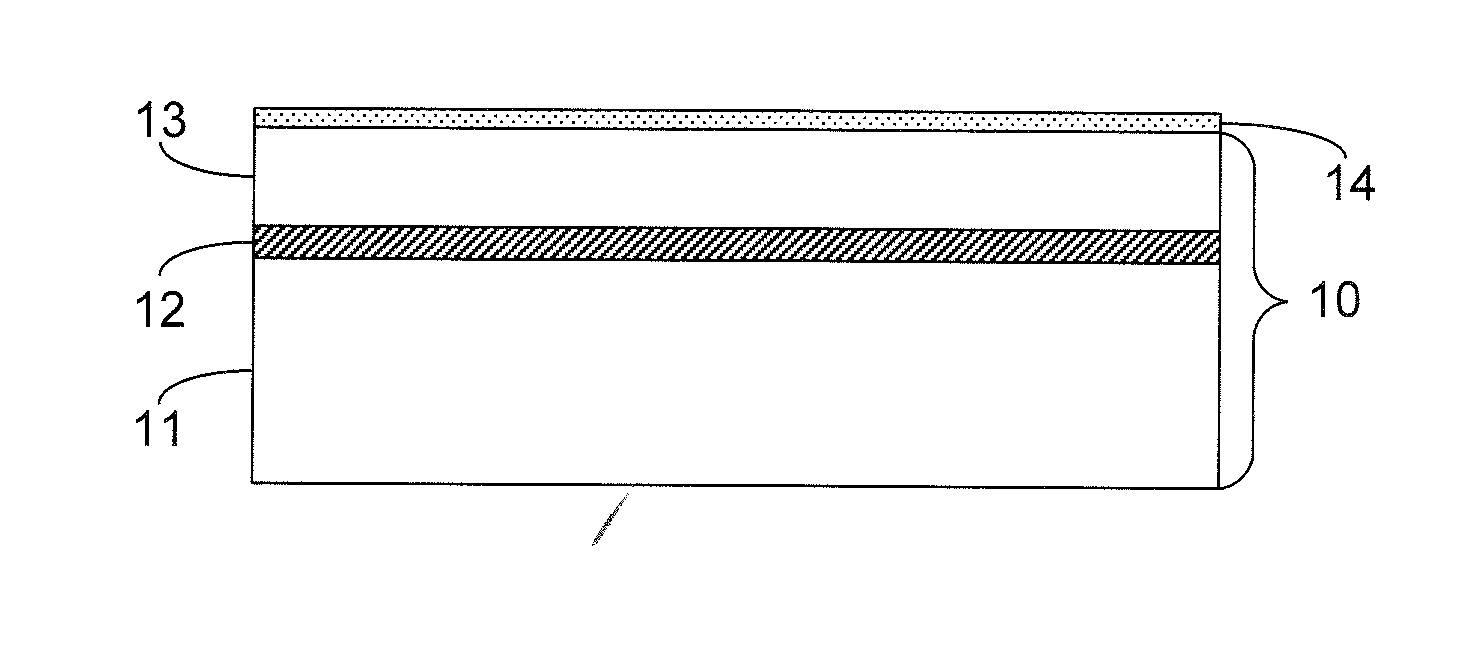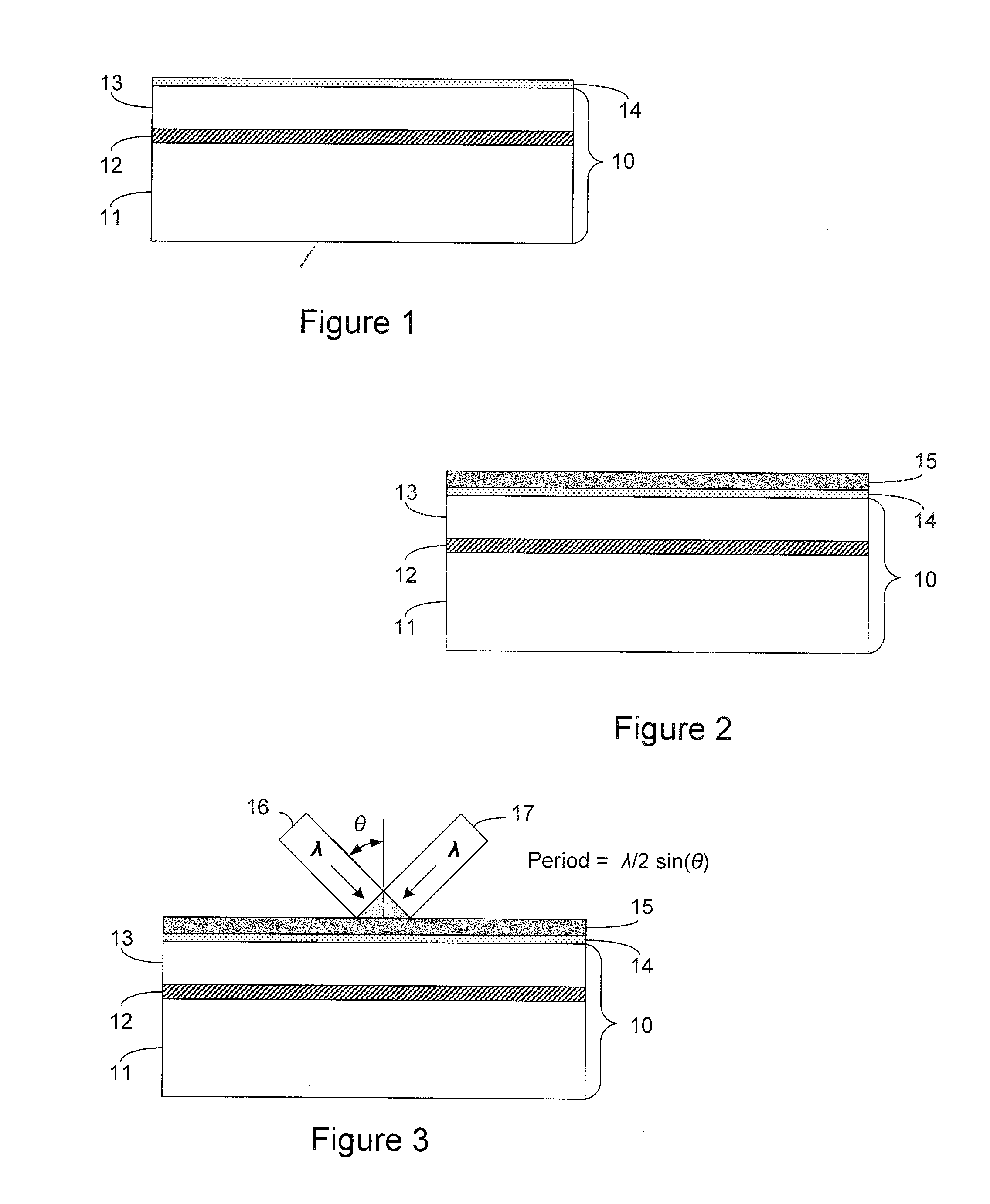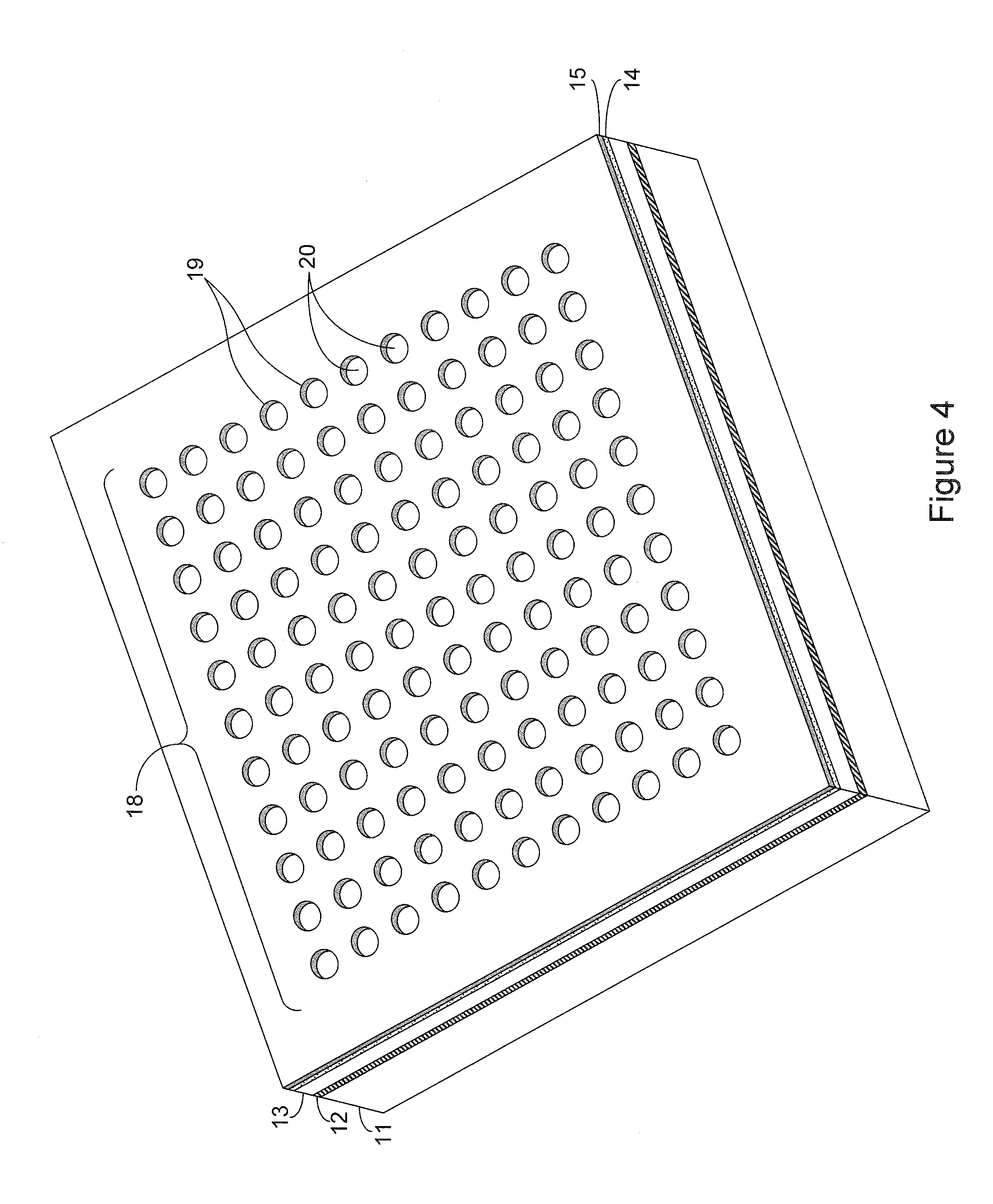Method of fabricating a scalable nanoporous membrane filter
a nanoporous membrane and filter technology, applied in the field of molecular filter and sieve, can solve the problems of high labor intensity, difficult task of working with isolated proteins, and many of the standard methods for high-throughput applications in microfabricated systems, etc., and achieves the effects of low manufacturing cost, speed and efficiency of molecular mass transport, and simple processing tools
- Summary
- Abstract
- Description
- Claims
- Application Information
AI Technical Summary
Benefits of technology
Problems solved by technology
Method used
Image
Examples
Embodiment Construction
[0042]Turning now to the drawings, FIGS. 1-13 show a first exemplary embodiment of the method of fabricating a nanoporous membrane filter of the present invention. In this first embodiment, an array of uniform nanopores is etch-formed in a suitably rigid thin-film layer of (100)-oriented single crystal silicon which forms the main body of the nanoporous membrane filter. As such, this thin-film layer may also be characterized as the “membrane layer,”“membrane body,” or “membrane structure.”
[0043]Generally, the (100)-oriented single crystal silicon is provided as a top layer of a thin-film multilayer which also includes one or more underlying substrate layers. In FIG. 1, the thin-film multilayer is particularly shown as a silicon-on-insulator (“SOT”) wafer, generally indicated at 10. The SOI wafer 10 includes a (100)-oriented single crystal silicon top layer 13 and a silicon base layer 11 (e.g. a silicon wafer substrate for handling the SOT) as the two outer layers, and a buffer layer...
PUM
| Property | Measurement | Unit |
|---|---|---|
| pore size | aaaaa | aaaaa |
| sizes | aaaaa | aaaaa |
| sizes | aaaaa | aaaaa |
Abstract
Description
Claims
Application Information
 Login to View More
Login to View More - R&D
- Intellectual Property
- Life Sciences
- Materials
- Tech Scout
- Unparalleled Data Quality
- Higher Quality Content
- 60% Fewer Hallucinations
Browse by: Latest US Patents, China's latest patents, Technical Efficacy Thesaurus, Application Domain, Technology Topic, Popular Technical Reports.
© 2025 PatSnap. All rights reserved.Legal|Privacy policy|Modern Slavery Act Transparency Statement|Sitemap|About US| Contact US: help@patsnap.com



